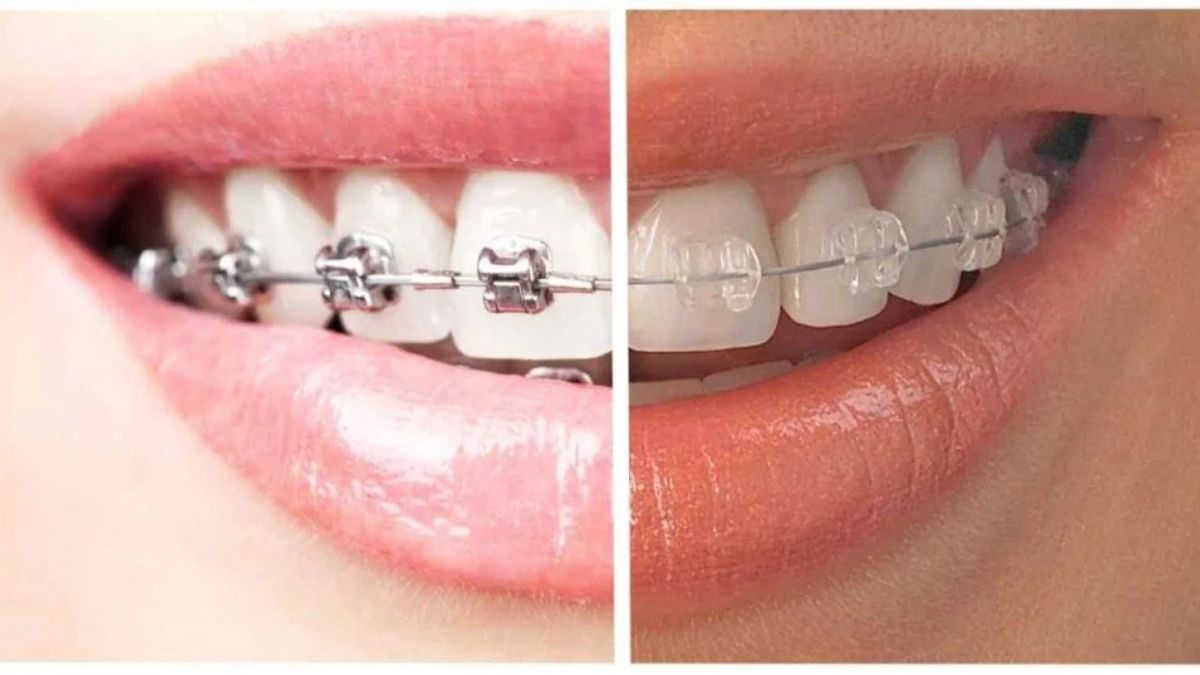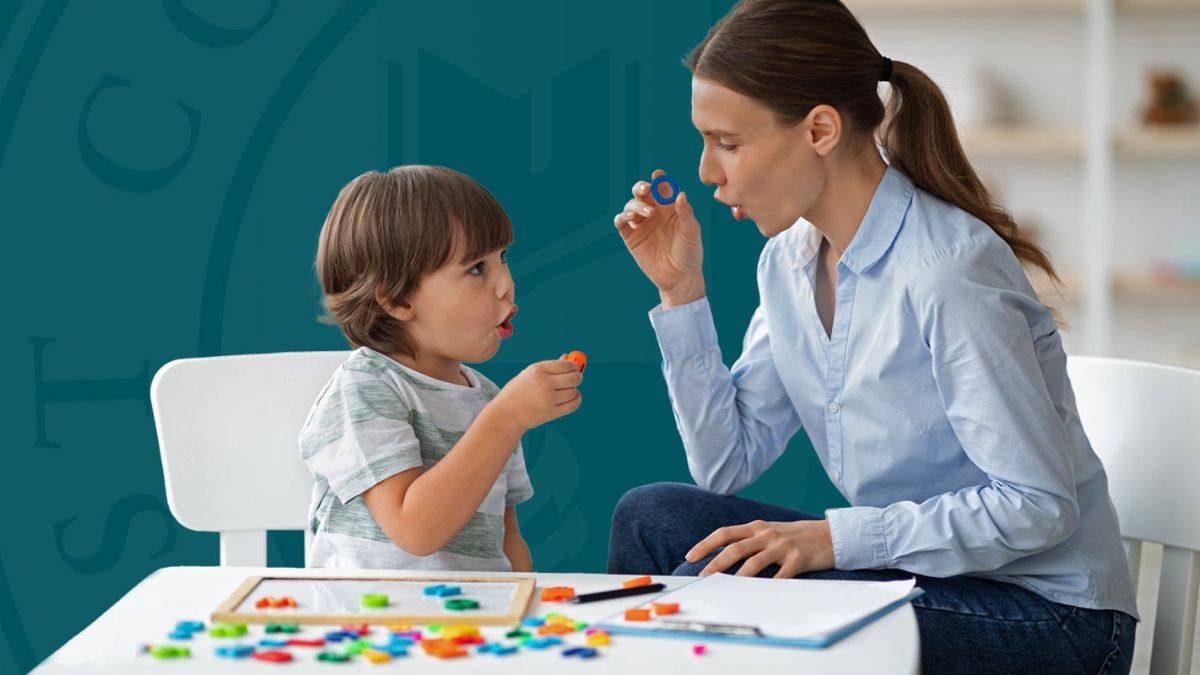Health
The Journey to a Perfect Smile: Understanding Different Types of Braces

Types of Braces: An Overview
Embarking on the journey to a perfect smile can feel like a monumental task, especially when confronted with the myriad options in orthodontics today. The evolution of braces has offered individuals an array of choices that cater to specific needs and preferences. Whether seeking the functional reliability of affordable braces or opting for modern alternatives that blend style and discretion, there’s a solution designed for everyone. These options allow individuals to align their goals with their personal and financial circumstances, making dental care more accessible and adaptable.
Understanding how braces function is crucial for those entering the world of orthodontic treatment. Essentially, braces apply gentle, continuous pressure over time to guide teeth into an optimal position. As one embarks on this alignment journey, the surrounding bone remodels to accommodate the changing structure of the teeth. In the end, this gradual realignment improves dental health and creates a more appealing smile by addressing problems including crowding, spacing, and over or underbites.
Traditional Metal Braces
Traditional metal braces remain a stalwart choice within orthodontics, and they are known for their robustness and efficacy in teeth straightening. Composed of high-grade stainless steel, they are the conventional choice for many and have stood the test of time. Often recommended by orthodontists for their precision in addressing a range of dental issues, metal braces are particularly beneficial in handling complex dental cases that might be resistant to other treatment forms. It’s their unparalleled strength that often makes them the first line of treatment, especially for children and teenagers.
The visibility of metal braces, while sometimes seen as a disadvantage, is counterbalanced by their affordability. They provide a durable solution that is often less expensive than more aesthetically focused options. However, those who prioritize aesthetics might find the noticeable nature of metal braces less appealing. Maintaining excellent oral hygiene is paramount with metal braces to prevent food particles from becoming trapped, which can trigger plaque build-up and tooth decay.
Ceramic Braces: Aesthetic Choice
Ceramic braces are an aesthetically pleasing option for individuals concerned with appearance during treatment. They are a common option for people seeking a more understated appearance because they are made of a translucent substance that complements the natural color of teeth. They’re especially favored among teenagers and adults who require the effectiveness of traditional braces but are conscious about the metal’s visibility.
While boasting significant benefits concerning visual appeal, ceramic braces typically come with a higher price tag. Additionally, they are typically larger than their metal counterparts and can contribute to gum irritation if not well-maintained. Despite these potential challenges, the advantages of ceramics — especially around social and professional settings — continue to make them an appealing option for many.
Lingual Braces: Hidden Aligners
Lingual braces provide the unique benefit of being entirely out of sight. Positioned on the back side of the teeth, they offer all the functionalities of traditional braces without the visible appearance. This makes them highly appealing to adults whose work might involve public speaking or media visibility, where aesthetics play a crucial role.
However, lingual braces are not without their challenges. They tend to be more expensive due to the precise customization required for each tooth. Initially, they might also affect speech and demand a period of adjustment. Moreover, cleaning can be more challenging due to their unseen placement. Despite these issues, their ability to offer invisible treatment keeps them as a preferred option for those specific about visual concealment.
Clear Aligners: Modern and Convenient
Clear aligners, like Invisalign, represent the cutting-edge of orthodontic treatment, combining discretion with convenience. These aligners are created from transparent plastic, fitting snugly over the teeth and progressively guiding them into place. The appeal of aligners lies in their removability, enabling users to eat their favorite foods without restrictions and maintain normal oral hygiene routines.
Though offering immense advantages, clear aligners may pose challenges, especially concerning cost. They tend to be priced higher than both metal and ceramic braces and are not always suitable for more complex dental issues. They demand a level of commitment from users as they must be worn for the majority of the day to be effective. Nevertheless, their advantages make them ideal for individuals leading active lifestyles or seeking an entirely discreet treatment option.
Deciding on the Best Option
Choosing the ideal type of braces involves evaluating various factors, from personal needs to practicality. Considerations such as age, lifestyle constraints, the complexity of dental issues, and financial budget play crucial roles in decision-making. Consultation with an orthodontic professional is vital to ascertain the most suitable treatment plan tailored to individual circumstances.
Understanding why dental braces are necessary can provide deeper insights into making informed choices, as explained by resources like MedicineNet. Such guidance helps reduce anxiety and empowers individuals to embark confidently on their journey to a healthier smile.
Conclusion: Embrace the Path to a Confident Smile
Electing the right kind of braces is a personal journey, and each decision brings a step closer to achieving the desired smile. Whether opting for the resilience of metal braces or the subtlety of clear aligners, each form offers benefits tailored to individual requirements. Armed with information and professional advice, individuals can embark confidently on the path to improved oral health and an attractive smile. Embrace the transformation and look forward to the confidence and joy that a perfect smile brings into everyday life.
Health
The Power of Gentle Fitness Classes for Confidence and Mobility in Later Years

Why Fitness Matters in Later Years
Maintaining fitness in later years is crucial for overall health and quality of life. Regular physical activity helps preserve muscle mass, improve balance, and maintain joint flexibility, reducing the risk of falls and injuries. Beyond the physical benefits, exercise supports cardiovascular health, aids in weight management, and promotes better sleep patterns. Staying active can also boost mental well-being by reducing stress, enhancing mood, and sharpening cognitive function, making daily tasks easier and more enjoyable.
For older adults seeking guidance and motivation, working with a certified professional can make a significant difference. Programs such as personal training Reston VA offer tailored exercise plans that accommodate individual fitness levels and goals. Personalized support ensures safe, effective routines that maximize results and help maintain independence and vitality as you age.
Gentle Fitness Classes: Options and Benefits
Tai Chi: Balance, Calmness, and Coordination
Tai Chi is a practical, gentle exercise for seniors, often referred to as “meditation in motion.” It features slow, deliberate movements and focused breathing, making it accessible to everyone. Regular practice enhances balance, flexibility, and posture, thereby reducing the risk of falls and promoting independent living as one ages.
Water-Based Exercise: Joint-Friendly and Fun
Water-based exercises, such as swimming and water aerobics, are beneficial for aging joints because buoyancy reduces impact and the risk of injury. They help individuals with osteoarthritis or mobility issues strengthen their muscles and improve their heart health without experiencing pain. These exercises support joint movement, lower blood pressure, promote heart health, and aid weight management. Group classes add social fun with music and games.
Strength Training: Energy, Balance, and Independence
Strength training helps seniors counteract muscle loss with simple exercises, such as chair squats and wall push-ups, that improve movement, balance, posture, and overall energy. Regular, guided classes ensure safety, motivation, and progress, leading to better ability and confidence to enjoy activities.
The Social and Emotional Impact of Group Classes
Participating in group fitness classes greatly boosts social involvement and emotional health among seniors. These classes not only improve physical health but also reduce loneliness by building bonds among peers with similar objectives. The friendship and camaraderie fostered encourage ongoing participation and strengthen a sense of community. The encouraging environment motivates members, and social events centered around fitness add extra meaning to their lives outside the gym.
Getting Started Safely
Begin exercising with guidance from a doctor or trainer, especially if you have health concerns. Safety is key, so consult with an expert to plan your activity. Community centers and gyms typically offer beginner classes for seniors, featuring trained instructors who can modify exercises to accommodate different mobility levels. Start slowly, pay attention to how your body responds, and keep a consistent routine. Gentle activities, such as Tai Chi, yoga, or water aerobics, can improve your health, foster social connections, and help you appreciate nature. Wear comfortable clothing, stay well-hydrated, and celebrate your progress, no matter how small.
Conclusion
Embracing gentle fitness classes in later years provides benefits that extend far beyond the physical. These programs support mobility and independence, enrich social lives, strengthen emotional health, and help preserve confidence for whatever challenges or adventures the future may hold. No matter your current fitness level, there’s a class or activity that can help you progress—with strength, balance, and joy, making every stage of life vibrant and fulfilling.
Health
Innovative Applications of Modern Chemical Blending Technologies

Modern chemical manufacturing is experiencing a transformation propelled by advanced blending technologies. These improvements are streamlining processes, raising product quality, and prioritizing sustainability across industries. Whether it’s pharmaceuticals or agriculture, innovations in chemical blending are unlocking solutions to some of the world’s toughest challenges. Choosing the right industrial mixer is becoming critical as manufacturers face heightened demands for consistency, safety, and environmental compliance.
Empowered by digitalization, artificial intelligence, and new eco-friendly approaches, today’s chemical blending practices are radically different from those of just a decade ago. As companies strive to minimize waste and resource use, novel technologies are enabling shifts toward greener production and greater operational agility.
Advanced Mixing Systems in Agriculture
The agricultural sector is a prime example of how advanced mixing technologies yield real-world benefits. New systems incorporate turbulence-enhancing mixer designs and closed-loop controls that facilitate optimal blending of agrochemicals. These improvements ensure that inputs like fertilizers, pesticides, and micronutrients are delivered with precision, minimizing chemical runoff and environmental contamination. With digital sensors tracking pH, temperature, and nutrient loads in real time, farmers are seeing increased yields while reducing waste.
Moreover, digital control systems can automate mixing operations, allowing farmers and agronomists to focus on crop management rather than manual mixing. As sustainable farming becomes ever more critical, innovations in mixing technology act as a force multiplier, fostering food security and environmental protection.
AI and Machine Learning in Chemical Blending
Artificial intelligence and machine learning are redefining chemical blending by delivering process intelligence once unimaginable. AI-based models can predict how different chemicals will interact, optimize formulations, and rapidly simulate scenarios to identify the most effective blends. In manufacturing settings, these tools monitor key variables and make automated adjustments, ensuring consistently high-quality products and boosting operational efficiency.
The use of AI extends to preventive maintenance as well—monitoring vibrations, temperature, and output consistency can predict potential failures before they disrupt production. Importantly, intelligent blending systems can also help reduce energy usage, furthering sustainability efforts in large-scale chemical operations.
Eco-Friendly Additive Processes
As global stakeholders emphasize greener production, chemical researchers are exploring alternatives to longstanding synthetic processes. Innovations such as enzyme-catalyzed, light—driven fluorination enable the production of valuable chemicals without harsh reagents or excessive waste. This eco-friendly approach is already being applied in the manufacture of pharmaceuticals, crop care solutions, and renewable fuel additives, aligning the chemical sector with global sustainability targets.
These process improvements also support regulatory compliance by decreasing the production of hazardous byproducts. Companies pioneering such advances position themselves for growth as eco-conscious markets—and government regulations—continue to evolve.
Enhanced Mixing in Porous Media
Mixing efficiency is a constant challenge, especially in environments where liquids move through porous materials. Researchers are tackling this by adding flexible polymers to fluids, which causes elastic instabilities and creates turbulence-like mixing. The result is faster reactions, better material dispersion, and shorter mixing times, ultimately leading to greater product consistency and lower operational costs.
This technology is particularly relevant for chemical processing in soil remediation, oil recovery, and specialty manufacturing, where confined environments can impede traditional mixing methods.
Water-Based Release Systems in Composites
The composite materials industry is shifting away from solvent-based and per- and polyfluoroalkyl substances (PFAS)-containing release agents, spurred by both performance and environmental imperatives. Water-based release systems now offer equivalent—or better—performance, reducing emissions, plant odor, and clean-up complexity.
Manufacturers implementing these technologies are not only meeting stricter regulatory requirements but also enhancing worker safety and lowering costs. With demand for PFAS-free solutions rapidly increasing, water-based release systems are quickly becoming the new industry standard.
Digitalization and Cloud Computing
Digitalization is revolutionizing chemical operations at every level. By harnessing data analytics, cloud platforms, and digital twins, chemical companies can optimize production, predict equipment failures, and accelerate research and development. Cloud-connected sensors and machine learning models collect, process, and act on vast amounts of data, providing real-time visibility and improving both quality and safety.
Digital twins enable operators to run virtual simulations that test various blending conditions, minimizing downtime and maximizing output. As more chemical manufacturers invest in digitalization, industry-wide efficiency gains are expected—driving down costs while pushing up standards for quality and safety.
Conclusion
Modern chemical blending technologies are unlocking new efficiencies, supporting sustainability, and enabling previously unattainable levels of product quality across sectors. As blending systems become more intelligent and environmentally aware, industries from agriculture to advanced composites are poised to benefit. By adopting these innovations, chemical manufacturers can adapt to a rapidly changing world while remaining competitive and compliant in an era of global transformation.
Health
The Last Step That Matters Most: Building Real-World Communication After Speech Therapy

Introduction
Completing speech therapy marks a significant milestone, yet the journey doesn’t truly end once therapy sessions conclude. The ability to confidently communicate in everyday situations is, for many, the real measure of lasting progress. Applying the tools you’ve acquired in therapy can sometimes feel daunting, but mastering the final link in speech therapy means building resilience, independence, and success well beyond the clinic room.
Bridging the gap between structured practice and spontaneous conversation isn’t always straightforward. The transition requires not only persistence but also creative strategies and consistent support. By focusing on real-world communication, individuals can transform their efforts in therapy into meaningful, lifelong skills.
Bridging the Gap Between Therapy and Daily Life
Speech therapy equips individuals with a powerful foundation, but it is the real-world application that truly reinforces these accomplishments. Everyday environments—whether at home, work, or in public—provide the varied, unpredictable contexts necessary for communication growth. Practicing conversation skills outside the therapy room promotes adaptation and flexibility, enabling individuals to tailor their communication style to any situation. This adaptive approach not only builds confidence but also ensures improvements are both sustainable and relevant to daily life.
Taking proactive steps, such as planning opportunities for social interaction or seeking new experiences, can provide invaluable practice. For instance, joining a hobby group or engaging in neighborhood events introduces fresh conversational contexts while offering a safe space to stretch communication boundaries.
The Role of Support Systems
Family, friends, and colleagues have tremendous influence on the successful integration of speech therapy skills. Their encouragement provides a sense of safety and motivation, fostering an environment where communication can be practiced without fear of judgment. Transparent discussions about progress, setbacks, and personal goals strengthen relationships and reinforce the journey toward clear, confident speech.
Establishing open communication among loved ones also creates accountability and shared understanding, offering gentle reminders and positive reinforcement during daily interactions. Peer support groups, both online and in local communities, provide additional mentorship and practical advice, helping to navigate everyday communication challenges with empathy and confidence. You can learn more about the value of community participation in communication recovery in this resource from Psychology Today.
Overcoming Challenges
Navigating real-world communication often means confronting setbacks and unexpected hurdles. Triggers like unfamiliar environments, group settings, or fast-paced conversations may bring about anxiety or self-doubt. Recognizing these triggers and developing healthy coping mechanisms—such as mindful breathing or prompt clarification requests—can help manage stress and maintain composure. Celebrate small victories, as each successful conversation, no matter how brief, is a step in the right direction.
Setting realistic, incremental goals and tracking progress can demystify the transition. By breaking larger aspirations into manageable steps—like ordering food at a restaurant or joining a discussion at work—progress becomes both measurable and motivating. Remember, the process is a journey: challenges are natural, solutions are attainable, and persistence always pays off.
Embracing Continuous Learning
Language and communication skills are dynamic, evolving as individuals encounter new people, situations, and challenges. Embracing the mindset of ongoing learning ensures that growth doesn’t plateau after therapy. Regularly seeking feedback from trusted peers and remaining open to adjusting techniques fosters adaptability and long-term competence.
Staying engaged with speech enrichment opportunities—such as public speaking workshops, book clubs, or additional language courses—can keep skills sharp and relevant to changing circumstances. A willingness to try new approaches, adapt to feedback, and explore unfamiliar conversational terrain is at the heart of lifelong communication success.
Conclusion
The last step that matters most in the journey after speech therapy is transitioning skills from the clinic to the complexities of daily life. By focusing on the final link in speech therapy—integrating learned techniques into real-world communication—individuals unlock the confidence and independence essential for meaningful connection. With strong support systems, mindful strategies, and a desire for lifelong growth, this crucial step leads to enduring success in every conversation ahead.
-

 GENERAL12 months ago
GENERAL12 months agoFrom Fan Art to Original Works: The Diversity of doujindesu Creations
-

 Entertainment8 months ago
Entertainment8 months agoEnchantment & Excitement: Crafting Unforgettable Event Experiences
-

 GENERAL9 months ago
GENERAL9 months agoEngland Business Visa Requirements for American and International Citizens in 2025: A Guide for Entrepreneurs
-

 GENERAL8 months ago
GENERAL8 months agoCrossword Conundrum: The Significance of vault opener nyt crossword
-

 GENERAL10 months ago
GENERAL10 months agoLatest Trends in Men’s and Women’s Jackets for the Upcoming Season
-

 GENERAL8 months ago
GENERAL8 months agoExploring the World of nhentai.nef: A Comprehensive Guide for New Users
-

 Health12 months ago
Health12 months agoDiscovering gel ooru: The Ultimate Guide to This Unique Traditional Craft
-

 GENERAL1 year ago
GENERAL1 year agoWhy raterpoint is Revolutionizing Customer Feedback
